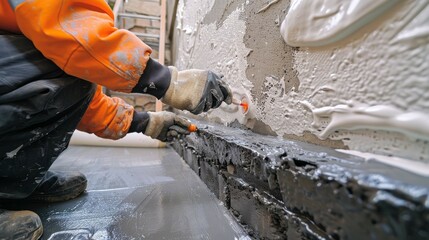Massage is an ancient healing art that can benefit the whole body. It increases blood flow, which helps bring in nutrients and oxygen and get rid of waste products.
It also reduces pain, and boosts serotonin levels. It’s also an instinctive way to show someone that you care about them. Visit www.flowstate918.com/ to learn more.
Stress is the body’s normal response to a threat or challenge and it can manifest itself in both physical and mental symptoms. In the short term, it can help us function by preparing the body for the fight or flight reaction but prolonged stress can cause many problems including fatigue, digestive problems, heart disease and even psychological issues like anxiety and depression. Massage has been shown to decrease stress and help the body return to a state of balance and wellness.
When a massage is given it stimulates the autonomic nervous system which encourages relaxation psychologically. This occurs as the body increases the levels of positive hormones such as endorphins, serotonin and dopamine. These hormones help to relieve anxiety and give a person a sense of well being, while reducing depression and helping to boost motivation.
A good massage will also increase tissue elasticity and promotes the parasympathetic nervous system to become active which can reduce tension. In fact, research has shown that even a single one hour massage can reduce cortisol levels and boost serotonin, which in turn will lower blood pressure, relax muscles and increase your overall health.
In addition to the psychological benefits of a massage, pain is also reduced. This is because the body’s natural inflammatory process increases when there is a build up of stress and this can actually increase the amount of pain that the patient feels.
This is why it is important that patients are not stressed prior to their appointment. The best way to do this is to book them in for a treatment when they are not working or doing anything else that requires their attention.
The best time to do this would be on a Friday afternoon, a day when the clinic is closed and they can enjoy their massage without having to think about going back to work or getting home and making dinner for the family. This is the ideal setting for them to get the most out of their massage and it will also ensure that they can take full advantage of the psychological benefits.
Relieves Pain
A number of studies have demonstrated that massage reduces pain levels. Often this is due to the modulation of the nervous system through the use of techniques that create friction against the skin. This increases the surface area of the nerves that communicate with the brain and can block pain signals. This is known as the gate control theory of pain management and massage therapy has been shown to be effective in closing these gates. Other mechanisms that occur during therapeutic massage that help to relieve pain include relaxing muscles, tendons and ligaments, decreasing stress and anxiety, relieving muscle tension, increasing flexibility and reducing the need for pain medications.
Massage also stimulates the body to circulate more oxygenated blood, bringing healing nutrients to the tissues and organs. This helps to remove toxins and waste products. It also improves the flow of lymph fluid, which transports waste from the tissues to glands and nodes where it is removed from the body. Massage may also enhance the function of the nervous system by reducing stress and encouraging the release of neurotransmitters such as serotonin and dopamine, which are natural pain killers.
One study found that the participants surveyed reported that massage had a positive effect on their sense of well-being, despite their physical discomfort and pain. This was attributed to the emotional and spiritual aspects of massage as well as the reduction in stress levels. Another participant commented that “It was a very healing experience emotionally and physically.” In addition, there were numerous nursing comments regarding the impact of massage on the sense of self-worth in patients with chronic illness or terminal diseases.
If the ailment you are dealing with involves muscle damage or inflammation, a deep tissue massage is probably not recommended as it will aggravate the condition and could cause more harm than good. However, if your pain is a result of tightened muscles, trigger points or tension in the joints, then massage is definitely worth considering. It will likely ease the pain by releasing endorphins, relaxing the muscles and tendons and improving circulation.
Relieves Muscle Tension
Using manipulating techniques, massages break down muscle contractures and tight muscles that can lead to pain. When this is combined with the parasympathetic nervous system activation that comes with the massage, it results in a reduction in both perception of pain and muscle tension. The manipulation of soft tissues also improves range of motion and mobility in stiff muscles, releases toxins and breaks down scar tissue adhesions. To get the most benefit from your massage, it’s important to arrive at the session feeling relaxed and ready. This is why it’s advisable to dress in comfortable and lightweight clothing. Avoid wearing jewelry or any other items that could potentially cause discomfort during the treatment. It’s also recommended to arrive 15-20 minutes prior to your scheduled appointment time to allow yourself a chance to relax before the treatment begins.
Aside from the calming and relaxing effects that a massage can have, it also increases blood flow to the areas being worked on, which provides an extra boost in relieving tight muscle tissue and releasing toxins. Massage also relieves pressure on nerves that might be compressed by tense muscles, which allows the nerves to assume their normal function of transmitting signals to and from the brain.
This is especially beneficial for people with painful conditions such as rheumatoid arthritis and ankylosing spondylitis, since it can help reduce symptoms like inflammation, stiffness and pain by increasing the movement of the lymphatic fluid. Studies have shown that people who receive massage regularly report better quality of life and well-being. This may be due to the fact that massage reduces stress and anxiety, and improves overall health.
If you’re planning on getting a massage to ease muscle tension, be sure to consult your doctor first. There are certain massage techniques that require strong pressure to joints and muscles, which can be dangerous for individuals with pre-existing conditions like rheumatoid arthritis. In addition, some massage techniques can result in dehydration, so it’s important to drink plenty of water following your session. Avoid consuming alcohol or caffeine, as these can impede the elimination of toxins from your body.
Relieves Constipation
Constipation can significantly impact bowel health and a person’s quality of life. It is characterized by infrequent bowel movements, painful stool passage and a sensation of incomplete evacuation. The condition is more common in adults than in children, and it can be difficult to treat with medications alone. Massage is one of the safest and natural ways to relieve constipation, promoting the healthy flow of waste through the colon.
While mild constipation may be treated with lifestyle changes such as boosting fiber and water intake, moderate to severe cases may require more advanced treatments. In these instances, a doctor can prescribe medication to help ease the symptoms. However, abdominal massage has also been shown to be an effective treatment for constipation by stimulating peristalsis—the wave-like muscle contractions that move stool through the large intestine.
A meta-analysis of studies on the effectiveness of abdominal massage in relieving functional constipation showed that it increased defecation frequency and relieved difficulties with defecation. Additionally, it reduced bloating and improved stool consistency. Additionally, the research found that it is an effective treatment for reducing the symptoms of constipation without the negative side effects associated with many prescription laxatives.
According to integrative board-certified gastroenterologist Elena Ivanina, a simple abdominal massage can help relieve constipation because it stimulates the “gut-brain axis.” The gut-brain axis is the communication network between the brain and digestive tract. A dysfunctional gut can send a message to the brain that causes a stress response, which can lead to more constipation. By stimulating the gut-brain axis, a massage can alleviate the tension and pain caused by constipation.
A simple way to perform a self-massage for constipation is to put your feet up, place a pillow under your knees and hold in your stomach muscles while you walk around the room for 10 minutes. The movement of walking and the pressure on the abdomen will cause the intestine to move. Repeat this exercise daily as part of your bowel routine to prepare the body and brain for a regular bowel movement each day. Adding this simple practice to your daily regimen can also prevent constipation from returning or becoming more severe.




 Keyword research is the foundation of a successful SEO strategy. It helps you identify the words and phrases that your prospects use when searching for home remodeling services. This way, you can tailor your content to match what people are looking for, increasing the likelihood that they will find your site. It is also important to understand how keywords impact search engine optimization (SEO) and how to maximize their effectiveness.
Keyword research is the foundation of a successful SEO strategy. It helps you identify the words and phrases that your prospects use when searching for home remodeling services. This way, you can tailor your content to match what people are looking for, increasing the likelihood that they will find your site. It is also important to understand how keywords impact search engine optimization (SEO) and how to maximize their effectiveness.






